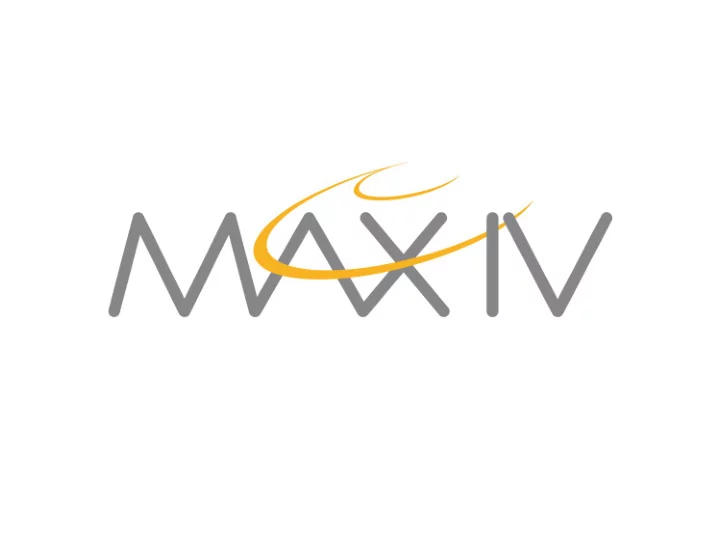

Webjive abdullah.amjad@maxiv.lu.se On behalf of the KITS group
Start with Why? Web based tool for control system. Not dependent on OS. User-friendly and intuitive interactions. Easy and quick-to-use. Monitoring as well as control. User autonomy.
WebJive is not Jive WebJive is a Device explorer built on TangoGQL With WebJive you can: ● View a list of all Tango devices ● View and modify device properties ● View and modify device attributes ● View and execute device commands ● Create web interfaces for interacting with Tango devices (on /<tangoDB>/ dashboard)
Architecture
Frontend ● Built using React, Redux, Typescript. ● Bunch of utility libraries for API calls, plotting etc. ● Follows most-recent development techniques and guidelines in React world. ● Updates and maintenance are expected to be quick and pain-free. ● Tango attribute subscriptions, event-based, auto- updates using websockets. ● Two root level-views; Devices and Dashboards.
The Devices View ● Control of all the devices in the control system in treelike hierarchy. ● All attributes, commands and properties. ● Automatic detection for inputs. ● Search bar for devices. ● Generic implementation for all the devices.
Dashboards ● Customizable and shareable views. ● Drag-and-drop from default widgets and connect them to devices and/or attributes. ● Edit mode and run mode.
Installation Clone the repository. $ npm install $ npm start Minimum node version: 7.6 (introduced async/ wait) Verified working node version: 9.11.2 (currently used by the dockerfile)
Easy with Docker docker-compose build docker-compose run
Backend ● Aiohttp server with GraphQL API. ● Graphene, python library for GraphQL implementation. ● Client asks explicitly what he needs reducing number of calls. ● One call for nested data instead of multiple calls on multiple end-points (next slide). ● Query: fetch data via resolvers. ● Mutation: create, update and delete. ● Subscription: real-time connection with the server, events from tango through websockets.
But it needs TangoGQL WebJive is unable to speak with Tango WebJive speaks only GraphQL And TangoGQL translate Tango to GraphQL…
GraphQL API call example
Installation Clone the repository. $ pip install -r requirements.txt $ python -m tangogql Conda environment can be created using the _environment.yml_. Dockerfile is provided and can be used to run the server
For developers How to create a widget https://webjive.readthedocs.io/en/latest/ widget.html
Authentication and persistence ● Authentication and authorization through JSON web tokens (JWT) with AD as source of information. ● Persistence like saving of dashboards using Mongo DB. ● Logging for all the mutations in the Tango DB.
Deployment ● All services within package are containerized. – Authentication, Mongo DB, Frontend, Backend ● CI/CD through Ansible. ● Traefik: reverse-proxy between frontend and backends for Tango Databases. – Accessible on webjive.maxiv.lu.se (internally)
Current Developments and Future Improving event- subscriptions. Extending widget library. Especially for Image Attributes. Synoptic View. Central logging for user actions in Elasticsearch. Group-editable dashboards. Performance testing.
Conclusion WebJive is a device tree WebJive is a dashboard WebJive will be a synoptic WebJive is not only an application, WebJive is first of all an architecture.
Open The WebJive Demo ● Use Chrome or Firefox ● Go to https://webjive.maxiv.lu.se ● search for tg_test ● read the attributes double_scalar, double_spectrum_ro ● set the attribute ampli to 20 ● ;-{ ● log in with demo/demo ● set the attribute ampli to 20 ● execute the commands SwitchStates, DevDouble
Acknowledgement ● Abdullah Amjad ● Matteo Canzari ● Jonas Rosenqvist ● Hélder Ribeiro ● Antonio Milan Otero ● Mark Nicol ● Antoine Dupré ● Ralph Braddock ● Mikel Eguiraun ● Emil Rosendahl ● Fredrik Bolmsten ● Hannes Petri ● Johan Forsberg ● Linh Nguyen
Recommend
More recommend